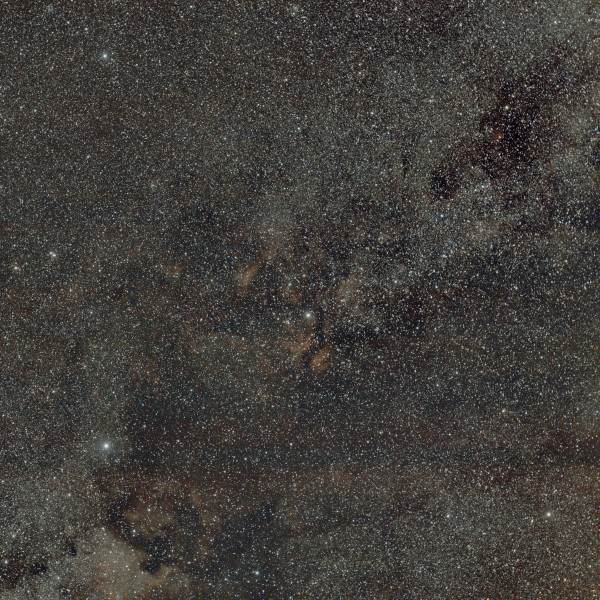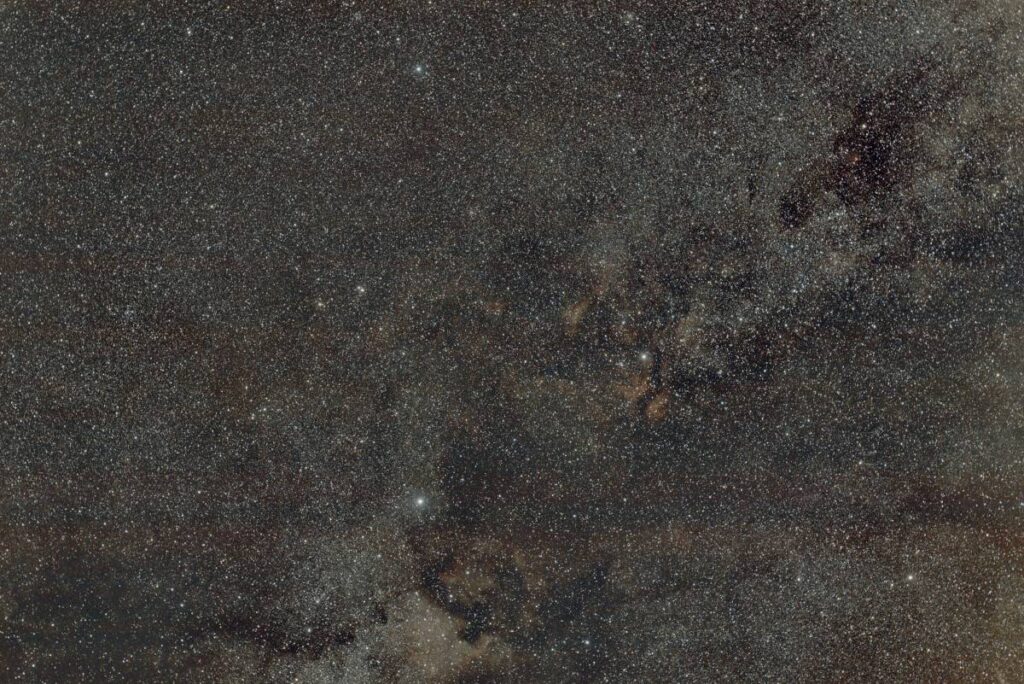
I have to admit. After testing Star Tracker Beta with the Samyang 135mm f/2 I was feeling a bit beaten. I had such high hopes and expectations and Star Tracker Beta performed underwhelmingly. So while I began licking my wounds by working on a new gear design for the next star tracker iteration Gamma, I decided to mount the 50mm lens on Beta for some additional testing. I knew that the 50mm lens would be more forgiving in terms of sensitivity to Beta’s periodic error. But I wasn’t prepared for what I started to see during my latest imaging session. It was a night of pure bliss and I captured my longest integration time photograph to date.
Another Happy Accident?
I spent the afternoon printing parts for a 0.5kg weight for the star tracker. The 1kg weight is perfect when I’m mounting the 135mm lens, but it’s a little too heavy for the 50mm. However, I wasn’t able to finish the 0.5kg weight before it was time to head into the backyard. This means that the load on the axis of rotation is going to be significantly greater than anything I’ve tested to date. I suppose that I don’t have to worry about the current draw as I already split the power supplies. And besides, I’m not expecting great results. That just means I won’t lose any sleep over an imbalanced mount. Yep, nothing like built-in excuses!
The problem is, after getting everything set up and letting Beta cycle for a few minutes, I could see that it was tracking brilliantly. I can definitely tell that the stepper motor is working a bit harder. But with a 256:1 gear reduction, I’m not concerned about stalling. It’s working hard and … it’s working. Is overbalancing Beta the key to unlocking its success? I wouldn’t get too excited. I can see the effect of the periodic error. It’s just not as exaggerated as in the 135mm photos. And that is to be expected. In other words, the 50mm focal length is far more forgiving to this kind of error.
Photographic Setup
After sharing that my 50mm Beta testing session was a success, describing my setup may seem a little anti-climactic. But in the interest of fully documenting my session, here it goes.
I knew I’d be looking at a much wider field of view for this test. So I stopped the lens down to f/4. This is because I know that below f/4 the lens aberrations begin to dominate away from the center of the photo. It won’t be perfect at f/4, but the main portion of the photograph will remain sharp. I decided to stay at ISO 400 with 30-second exposures.
Here’s another new thing that I learned this evening. While getting everything set up at 22:30, these camera settings looked to be ideal. Practically, this means that my histogram looked pretty good. What I didn’t account for was the fact that even at 22:30, it was still rather light out. By the time I got to midnight, my histogram shifted quite a bit to the left. I’m still OK, but in the future, I might consider upping the ISO another step (ex. 800) or increasing my exposure time. I ended up not even integrating my first 60 or so photos even though they were pretty good. The difference in darkness in the photos was just too great.
About That Photo…
You may recall that I calculated that I was able to keep about 19% of my photos for stacking when I was using Beta with the Samyang 135mm f/2 lens. Tonight, I kept 173 photos out of 258, or 67%! Of course, I’m not counting the ones I threw away at the beginning of my session due to sky brightness. But talk about a turn-around! It looks like Beta is going to perform just fine with shorter focal length lenses. Here is the final, lightly processed photo I achieved.

I went ahead and took calibration frames to ensure I’d get the best photo possible during stacking. I should note that there were some high clouds that were pervasive throughout the evening. So this isn’t the best photo I can produce, but it’s at least a glimpse of what is now possible with Beta. And it was nice to confirm that the 50mm lens was much more forgiving during tracking as expected.
By the way… There is a new version of Siril available that I really like. The biggest change that they’ve introduced is a new background extraction technique that I must say works much better for my photos. I’m looking forward to exploring more of the updates and changes soon. All this to say that Siril has once again become my go-to astrophotography processing program. I really like that you can manage the processing stages and then do quite a bit of image cleanup on the backend. Real powerful and efficient.
Where Do We Go From Here?
My list of astrophotography to-dos is getting pretty big. I’ve got a problem now that I didn’t have 2 nights ago. The balance issue with the 50mm lens and the results that I got make me think that I should run another test with the 135mm under similar conditions. I don’t think this will make a big difference, but it’s at least worth a try. Then I want to take a night with the 50mm and run 2 sessions to compare photos with and without using the Optilong L-Pro filter. I can tell there is a big difference but it would be nice to produce a side-by-side comparison under the same conditions.
Finally, I’m gearing up to begin my design of Gamma (yes, pun intended). That is assuming of course that I don’t learn anything new in my next round of 135mm testing. But I can tell you that my current thinking process is to build a planetary gearbox to drive the main shaft. Right now, I’m just testing how well I can print smaller gears and it’s going a little slower than I expected. That’s all part of the fun though. At any rate, the planetary gearbox solution is showing some promise. And I won’t complain about the additional torque advantages that will come from this approach. We’ll see how it goes.
